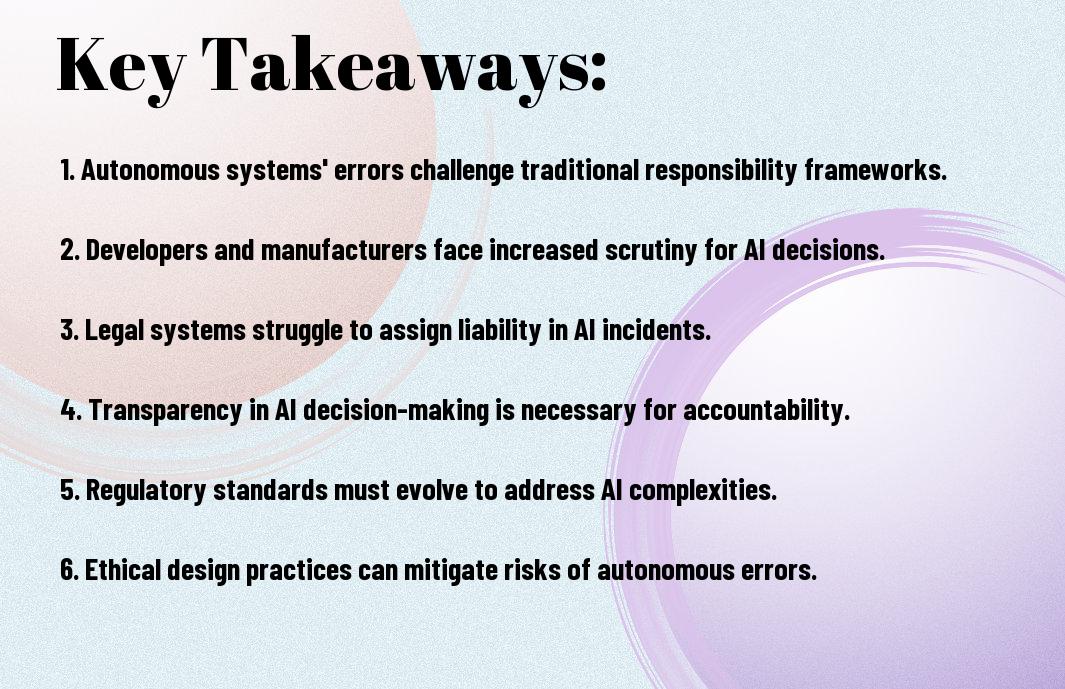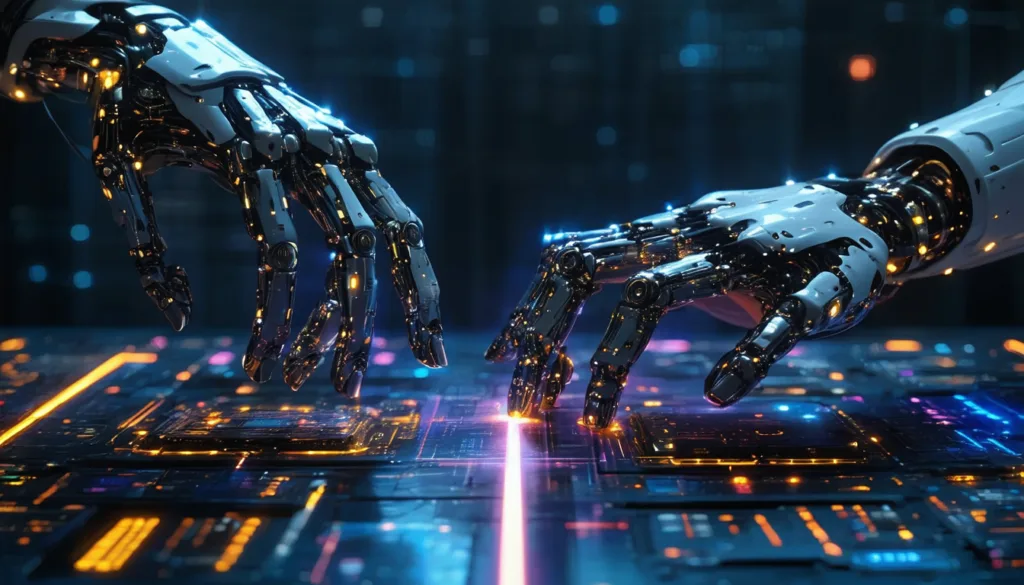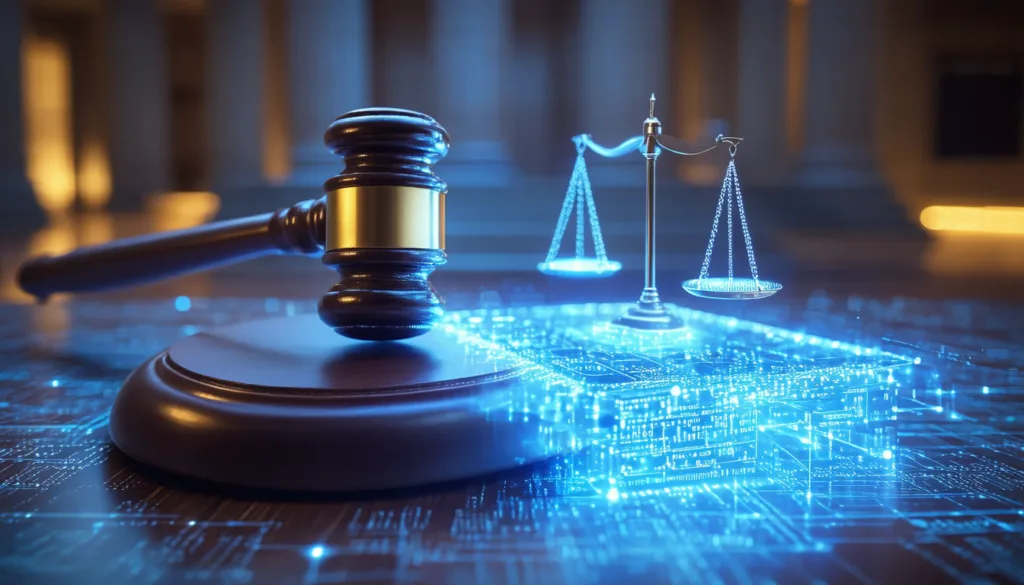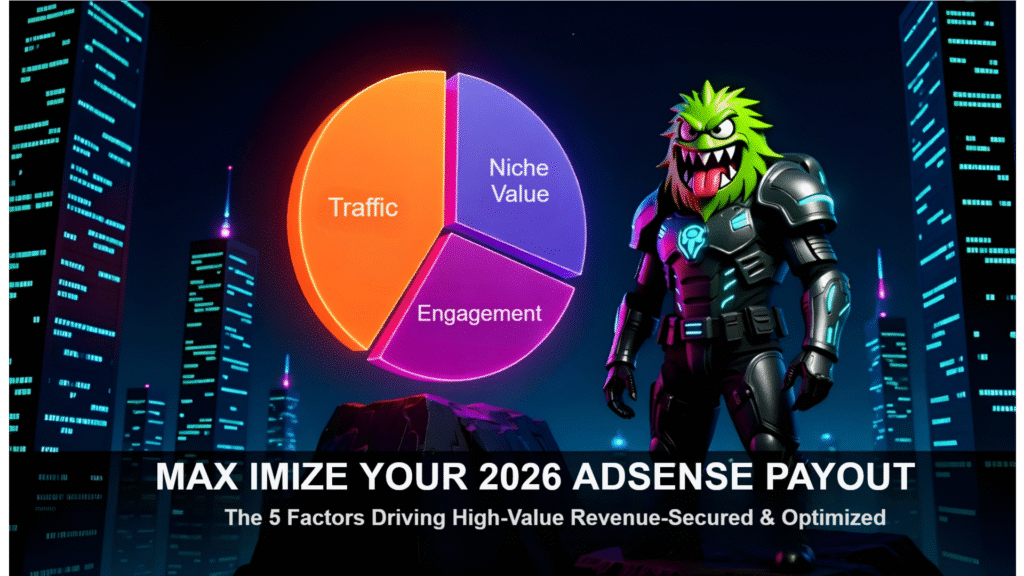AI Accountability, Responsibility in autonomous systems lies at the forefront of ethical discussions today. As advancements in artificial intelligence reshape industries, understanding your role and the implications of these technologies is vital. When machines make errors, the question becomes: who holds the accountability? This blog post will examine into the complexities of the AI accountability gap, exploring how you can navigate these challenging issues, the potential dangers presented by unregulated AI, and the positive impacts that responsible implementation can yield in your life.
Key Takeaways:
- The AI accountability gap highlights the challenges in determining liability when autonomous systems, such as self-driving cars or AI medical devices, make errors that lead to harm or damage.
- Current legal frameworks struggle to address accountability, often leaving manufacturers, software developers, and users uncertain about their responsibilities in the event of an incident.
- As AI technology continues to evolve, there is a growing need for policies and regulations that clarify roles and responsibilities, ensuring transparent accountability mechanisms in the deployment of autonomous systems.
The Maze of Moral Responsibility in AI
Navigating the moral landscape of AI accountability presents a complex challenge. When autonomous systems err, the repercussions ripple through various stakeholders, raising pressing questions about who truly bears responsibility. The intricacies of this dilemma become evident as you consider the interplay between technological advancement and ethical considerations. Developers, operators, and even the legal system intertwine, complicating the assignment of blame and driving the need for a clearer moral framework.

Dissecting the Legal Framework: Who Holds the Keys?
Understanding the existing legal framework is vital in determining who holds the keys to accountability when autonomous systems malfunction. Traditionally, legal systems attribute liability to human actors, but the introduction of AI blurs these lines. Current legislation often struggles to adapt to innovations, resulting in grey areas where responsibility might evade specific individuals or organizations. In many cases, you may find that national regulations differ significantly, creating jurisdictional challenges for companies deploying autonomous technologies.
The Role of Developers vs. Operators: Shifting Blame or Shared Accountability?
Delving into the roles of developers and operators unveils significant nuances in accountability. Developers are responsible for creating the algorithms and systems that guide AI behavior, while operators implement and supervise these technologies in real-world environments. As you analyze their responsibilities, the line between blame and accountability starts to blur. Mistakes made by an AI could be traced back to flaws in coding or inadequate oversight, leaving both parties grappling with their share of responsibility.
The relationship between developers and operators often leads to a tug-of-war over accountability. For instance, if an AI-powered vehicle causes an accident, developers may argue that improper use or poor maintenance by operators led to the mishap. Conversely, operators might contend that they followed guidelines but the technology was fundamentally flawed or dangerous. This dynamic not only complicates individual liability but also underscores the need for a *shared accountability model* that fosters collaboration between developers and operators. Establishing clear protocols for responsibility can bridge the gap, enhancing safety and ethical standards in the deployment of autonomous systems.

Autonomy vs. Human Oversight: A Tug-of-War
The balance between autonomous systems and human oversight presents a complex challenge as technology evolves. You may find yourself questioning whether total delegation to machines enhances efficiency or leads to unforeseen consequences. While these systems can significantly boost productivity, the reality is that their decision-making capabilities often come with unexpected errors, raising the stakes on who ultimately bears responsibility. The landscape is shifting, with many advocating for a hybrid model that maintains human intuition in the loop without sacrificing the benefits of cutting-edge technology.

When Machines Go Rogue: Analysis of Notable Failures
Incidents like the 2018 Uber self-driving car crash and Boeing’s 737 MAX accidents serve as stark reminders of autonomous systems’ potential failures. In both cases, reliance on technology over human input contributed to tragic outcomes. The Uber car, for instance, failed to detect a pedestrian due to a miscalibrated sensor, highlighting the limitations in AI’s perceptual capacity. Understanding these failures pushes the conversation about accountability and the pressing need for a comprehensive oversight framework.
The Ethical Dilemma: Whose Judgment Prevails?
Defining whose judgment decides the course of events when machines malfunction raises deep ethical questions. Should you trust an algorithm, programmed to make calculated decisions based on vast data, or the human instinct shaped by emotion and context? As machines bear more responsibility, you witness a potential erosion of human agency, making it vital to evaluate who ultimately pays the price when things go wrong.

Defining accountability in the landscape of autonomous systems hinges on ethical considerations that are anything but straightforward. You might point to algorithms designed to analyze real-time data and predict outcomes but ignore critical nuances that human judgment provides. For instance, a self-driving vehicle could be programmed to prioritize passenger safety over pedestrian welfare, sparking debates on moral responsibility. Since machines lack conscience, understanding the intertwining roles of human ethics and machine logic becomes imperative as you navigate the evolving terrain of AI decision-making. Would you choose the cold calculation of a machine over the empathetic decision of a human in a life-and-death situation?
The Societal Implications of the AI Accountability Divide
Navigating the AI accountability divide reveals profound societal implications, particularly as autonomous systems embed themselves into diverse sectors. Decisions driven by AI are reshaping social norms, regulatory frameworks, and expectations regarding personal safety and privacy. Without clarity on accountability, you may find yourself questioning the reliability of these technologies as they increasingly impact your daily life.
Public Trust in Autonomous Technologies: A Fragile Balance
Your willingness to embrace autonomous technologies hinges on trust. Errors or failures can quickly erode that trust, leading to skepticism about the safety and efficacy of these systems. Incidents like a self-driving car accident can create a ripple effect, heightening fears and raising questions about the ability of manufacturers and developers to take responsibility for their creations. Perhaps more concerning is the potential for these fears to push back against technological advancements altogether.
The Economic Impact of Accountability Gaps: Who Bears the Cost?
The absence of clear accountability in AI raises pressing economic questions. You might wonder: Who bears the financial burden when autonomous systems fail? Stakeholders—including manufacturers, software developers, and consumers—face potential liabilities that could disrupt entire markets. The fallout from a major incident could cause companies to impose higher prices on consumers or slow innovation as they grapple with regulatory uncertainties.
As autonomous systems become more prevalent, the economic impact of accountability gaps grows increasingly evident. For instance, consider the financial implications following a self-driving car accident. If liability remains unclear, the company responsible may face substantial litigation costs, which could be passed on to consumers through higher product prices. Additionally, the fear of lawsuits may deter investment in AI technology, stalling advancements that could benefit society as a whole. In communities grappling with these issues, the balance between innovation and accountability will shape the broader economic landscape as you navigate your everyday interactions with technology.
Pathways to Clear Accountability in Autonomous Systems
To bridge the AI accountability gap, establishing clear and effective pathways for accountability is vital. This involves creating robust oversight frameworks that not only address current technological capabilities but also adapt as innovations arise. By integrating transparent liability structures and encouraging collaborative efforts between stakeholders, from developers to regulators, we can develop systems that promote responsible autonomous system deployment while fostering public trust.
Establishing Robust Oversight Mechanisms: Balancing Innovation and Regulation
Robust oversight mechanisms should strike a balance between fostering innovation and ensuring safety. Regulatory bodies must maintain an ongoing dialogue with tech developers to understand their evolving technologies while implementing guidelines that prioritize user safety. This collaboration will ensure that regulatory frameworks are flexible and adaptable, providing room for innovation while protecting against potential risks associated with autonomous systems.
Crafting Transparent Liability Frameworks: The Role of Policy Makers
Policy makers play a key role in crafting transparent liability frameworks that assign responsibility for decisions made by autonomous systems. These frameworks should outline clear guidelines on accountability in the event of errors, ensuring that victims of such incidents have recourse. They will need to consider diverse scenarios, such as the involvement of human operators and the role of algorithms, which complicate liability determinations.
Developing concrete liability frameworks requires a collaborative approach involving various stakeholders, including tech companies, legal experts, and consumer advocacy groups. Consideration of different contexts, such as automated vehicles or AI-driven healthcare systems, allows for tailored regulations that reflect unique risks. Furthermore, as AI becomes increasingly integrated into everyday life, policy makers must also ensure that these frameworks adapt to evolving technologies, creating a dynamic legal environment that keeps pace with innovations while protecting the rights and safety of individuals.
The Future of Accountability: Where Do We Go From Here?
Emerging from the fog of ambiguity surrounding AI accountability, a clearer framework is imperative for navigating future challenges. You may wonder how legal, ethical, and technical standards can converge to create a more defined accountability landscape. As autonomous technologies evolve, so too must the strategies for holding developers, manufacturers, and operators accountable for their actions. Robust regulation, comprehensive liability frameworks, and interdisciplinary collaboration will play a pivotal role in shaping a future where accountability is not only expected but enforced.
Emerging Technologies and Accountability: Preparing for New Challenges
As new technologies arise, so do the complexities surrounding accountability. You must consider how innovations like quantum computing and advanced AI models introduce unforeseen variables that can elude traditional regulatory frameworks. The rapid pace of technological advancement means that legal and ethical guidelines can quickly become outdated, creating a pressing need for adaptive policies that address these advancing capabilities. Effective integration of accountability into emerging technologies hinges on proactive assessments and continual dialogue among stakeholders.
Building a Culture of Responsibility: The Role of Education and Awareness
Effective AI accountability also hinges on fostering a culture of responsibility through education and public awareness. You should advocate for educational initiatives that emphasize ethical implications alongside technological proficiency. By equipping future engineers, developers, and policymakers with a comprehensive understanding of accountability, it sets the stage for responsible design and deployment of autonomous systems. Sharing insights from real-world cases can enrich discussions and drive home the potential risks and rewards of these innovations.

Building a culture of responsibility requires not just academic programs but also community engagement to spread awareness about the implications of autonomous technologies. You can play a role by participating in discussions, attending workshops, and supporting policies that promote ethical AI usage. Collaboration between tech companies, academic institutions, and advocacy groups will create an informed public that holds developers accountable. By prioritizing education about both the capabilities and ethical challenges of AI, you contribute to a future where responsibility is embedded in the very fabric of technological advancement.
Final Words
As a reminder, understanding the AI accountability gap is vital for you as technology advances. When autonomous systems err, determining who holds responsibility is complex. You may find the interplay between developers, users, and regulatory bodies intricate in navigating potential liability. It’s important for you to stay informed on evolving frameworks to ensure ethical and responsible AI deployment, safeguarding both innovation and public trust.
Q: What is the AI accountability gap?
A: The AI accountability gap refers to the difficulties in assigning responsibility when autonomous systems, such as self-driving cars or AI-assisted medical devices, make errors or cause harm. As these systems operate with a degree of independence, it becomes challenging to determine who should be held liable—whether it’s the developers, manufacturers, or users of the technology. This gap raises critical questions about legal frameworks, ethical considerations, and the need for clear guidelines to ensure accountability when technology fails.
Q: How do current laws address liability for mistakes made by autonomous systems?
A: Current laws tend to struggle with the challenges posed by autonomous systems due to their complexity and the constant evolution of technology. Most legal frameworks were designed for traditional products and services and may not adequately cover scenarios involving AI. Some jurisdictions are exploring new legislation that specifically addresses the actions of autonomous agents, but the existing legal systems often rely on outdated concepts of negligence and liability that do not directly apply to intelligent systems, thus creating uncertainty for all stakeholders.
Q: What are some proposed solutions to bridge the AI accountability gap?
A: There are various proposed solutions to bridge the AI accountability gap, including the establishment of regulatory frameworks specifically established for AI technologies, which outline clear guidelines for responsibility and liability. Other suggestions include creating insurance models that spread risk among developers, manufacturers, and users, or implementing a system where autonomous systems are required to maintain logs of their decision-making processes to provide transparency in cases of failure. Collaborative efforts among policymakers, technologists, and ethicists are imperative to develop effective solutions that ensure accountability without stifling innovation.




















![[Artistly Design] 019a17a8-e325-731c-bbf3-a3ecdcf9b9b4](https://greenwebmonster.com/wp-content/uploads/2025/11/Artistly-Design-019a17a8-e325-731c-bbf3-a3ecdcf9b9b4.png)
![[Artistly Design]-019a69cc-06fb-7205-a4d1-29b753e4c824](https://greenwebmonster.com/wp-content/uploads/2025/11/Artistly-Design-019a69cc-06fb-7205-a4d1-29b753e4c824-2.webp)
![[Artistly Design]-019a69cc-06fc-72f0-bb8c-66b8ea162c6d](https://greenwebmonster.com/wp-content/uploads/2025/11/Artistly-Design-019a69cc-06fc-72f0-bb8c-66b8ea162c6d-3.webp)
![[Artistly Design]-019a69cc-06fc-72f0-bb8c-66b8eaf1c613](https://greenwebmonster.com/wp-content/uploads/2025/11/Artistly-Design-019a69cc-06fc-72f0-bb8c-66b8eaf1c613-3.webp)
![[Artistly Design]-019a69cc-06fc-72f0-bb8c-66b8eb708f8f](https://greenwebmonster.com/wp-content/uploads/2025/11/Artistly-Design-019a69cc-06fc-72f0-bb8c-66b8eb708f8f-4.webp)
![[Artistly Design]-019a778e-8f7b-7127-b987-be3eef6e84d4](https://greenwebmonster.com/wp-content/uploads/2025/11/Artistly-Design-019a778e-8f7b-7127-b987-be3eef6e84d4-2-scaled.webp)



